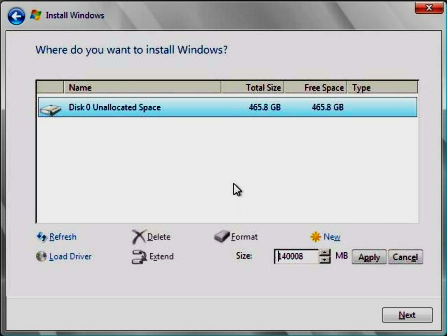| Skip Navigation Links | |
| Exit Print View | |

|
Sun Blade X3-2B Product Documentation |
Sun Blade X3-2B Model Name Change
Getting the Latest Firmware and Software
Hardware Installation and Product Notes
About the Sun Blade X3-2B Installation Guide for Windows Operating Systems
Supported OS Versions and Latest Information
Supported Windows Operating Systems
Latest Information in Product Notes
Single-Server Installation Methods
Oracle System Assistant Tasks Overview
Oracle System Assistant OS Installation Task
Obtaining Oracle System Assistant
Setting Up the Installation Method
Set Up for Remote Installation
Load BIOS Optimal Default Settings
Install Windows (Oracle System Assistant)
Install Windows Server 2008 (PXE)
Installing Server System Tools and Updating Drivers
Getting Server Firmware and Software
Firmware and Software Access Options
Available Software Release Packages
Accessing Firmware and Software
Download Firmware and Software Using My Oracle Support
This section describes how to install the OS without the use of Oracle System Assistant. The OS can be installed using either a local or remote method.
 | Caution - Data loss. The OS installation formats the boot disk, which erases any existing data on the disk, including any preinstalled OS. |
Before You Begin
Set up the server for the OS installation of choice (local or remote). See Set Up for Local Installation or Set Up for Remote Installation.
If necessary, prepare a volume on the server hard drives and set the boot device. Refer to the Sun Blade X3-2B (formerly Sun Blade X6270 M3) Installation Guide.
Acquire the Windows OS install distribution media.
For local installation: Insert the Microsoft Windows Server 2008 R2 installation media into the attached physical CD/DVD-ROM drive when prompted.
For remote installation: Insert the Windows Server installation media into the Oracle ILOM Remote Console system’s CD/DVD-ROM drive. Make sure you have selected CD-ROM in the Device menu.
If you are using a Windows image: Ensure that the Windows Server installation ISO image is accessible from the remote system. Make sure you have selected CD-ROM Image in the Device menu.
If you are using the Windows Remote or Windows Image method, you can do this through Oracle ILOM.
The BIOS POST process begins.
Note - BIOS POST messages, including the BIOS menu options list, can go by quickly. If you miss the messages, power cycle the server and hold down the F8 key during boot until the BBS Popup menu appears.

Once the BIOS POST process is complete, the BBS Popup menu appears. The BBS Popup menu allows you to select a boot device.
A sample BBS Popup menu screen:

When prompted with Press any key to boot from CD, quickly press any key.
The Windows installation wizard starts.

To add a mass storage driver for Windows Server 2008 SP2, click Load Driver, and browse to the location of the mass storage device driver (CD/DVD or USB flash drive). Select the driver information file (.inf).
Note - For Windows Server 2008 SP2, the driver must be accessible through a connected CD/DVD or the Oracle System Assistant USB flash drive. If the driver is not accessible, the disk is not visible as shown below.
To select the Windows default partition settings, click Next. Go to Step 9.
To override the Windows default partition settings, click Drive Options (advanced) and proceed to the next step.

 | Caution - Formatting or repartitioning a preexisting partition destroys all data on the partition. |

The Windows installation begins. During the installation process, the server reboots several times.
When the installation process is complete, Windows starts and prompts you to change the user password.
Note - The password must have 8 characters, with one number and one uppercase character. For more details, click the Accessibility link on the account creation screen.
Once you have assigned a password to the Administrator account, the Windows Server 2008 R2 desktop appears.
See Also